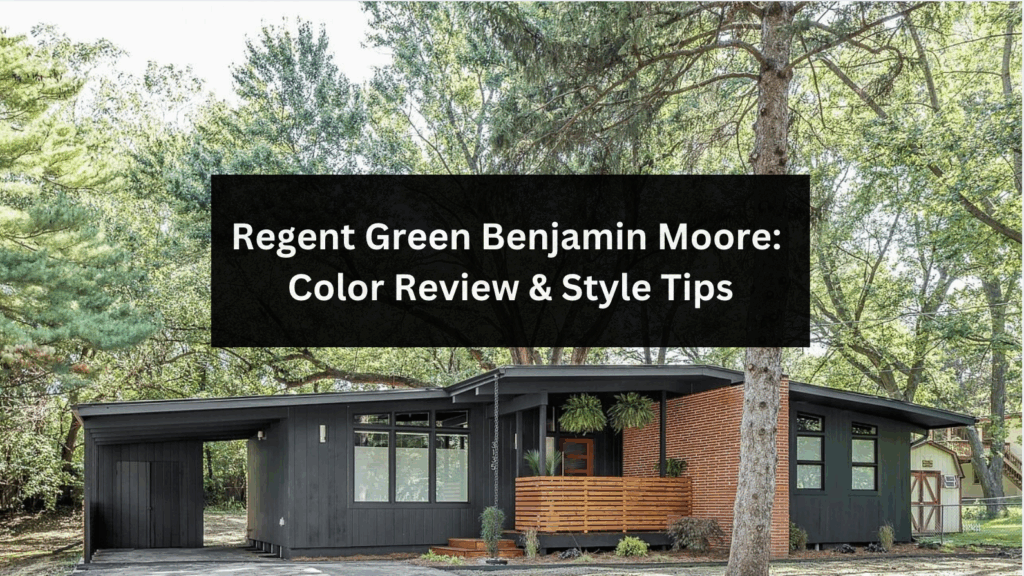Have you been staring at your walls, wishing they had more personality? I was in the same spot last year. I wanted a color with depth but wasn’t sure where to start.
After testing dozens of paint samples, I found Regent Green by Benjamin Moore, which changed my whole space.
In this article, I’ll show you:
- What this color really looks like in homes
- The best rooms to use this shade
- Colors that work perfectly with it
- My honest tips after living with it for a year
If you’re thinking about going dark with your walls but feel unsure, this guide will help you decide if Regent Green is right for your home.
Trust me—if I can do it, you can too.
What Is Regent Green?
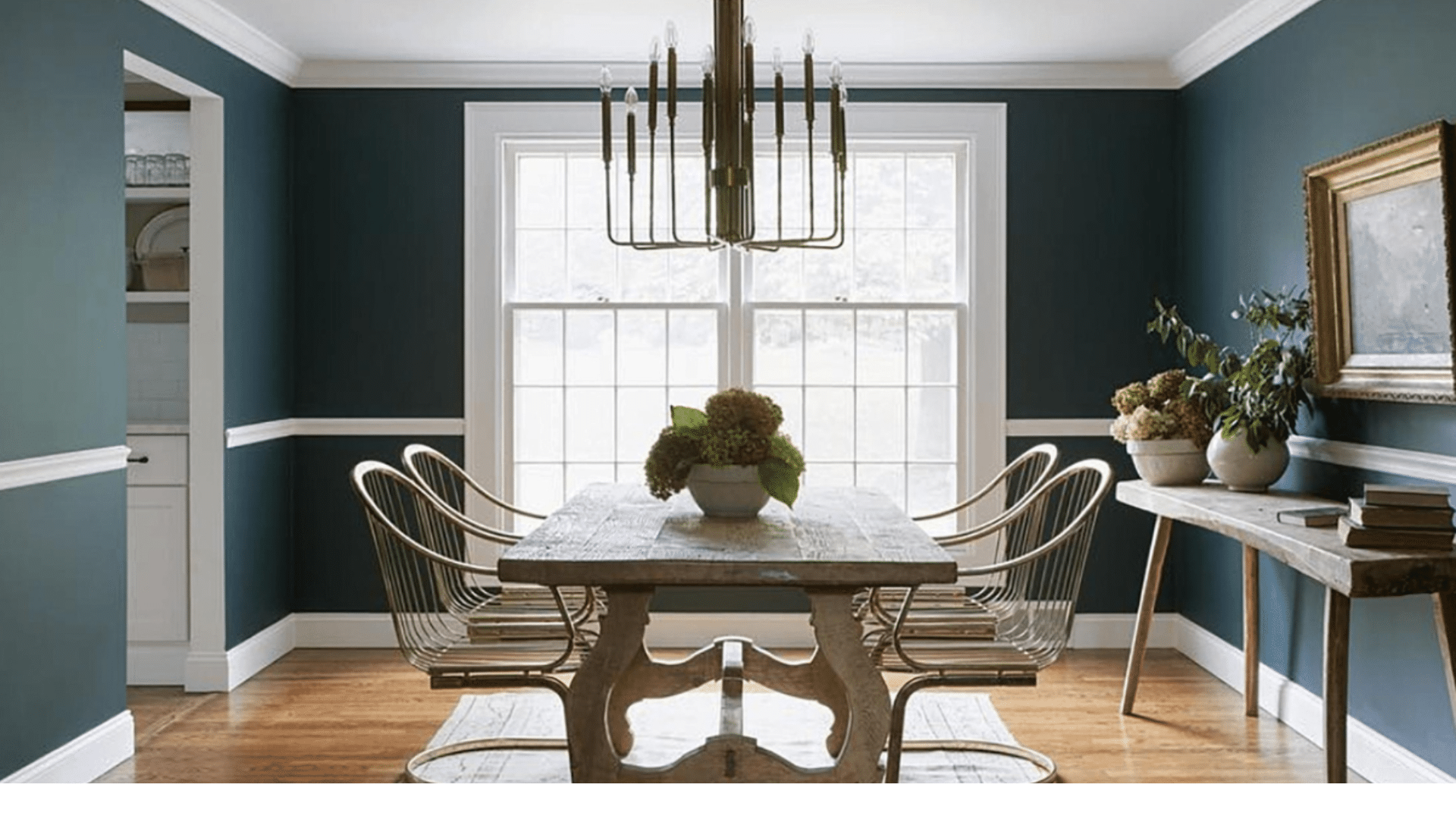
Regent Green is a very dark green that reads almost black in low light. When sunlight hits it, the rich green base becomes more noticeable.
It’s calm yet makes a statement without being too loud. Unlike bright greens that scream for attention, this shade has a quiet confidence.
Color details:
- Benjamin Moore color number: 2136-20
- Part of their Classic Color Collection
- Low light reflectance value (LRV)
- Changes throughout the day
Not too bright. Not too cold. Just deep and full of character.
What I like most about it is how it shifts moods. In my south-facing living room, it looks more green during daylight and nearly black at night, giving my space two different feels without repainting.
Where Regent Green Works Best
I’ve put this color in several rooms of my house. Some spots make it shine better than others.
After experimenting with Regent Green throughout my home, I’ve discovered it truly excels in certain areas while being more challenging in others.
1. Accent Walls
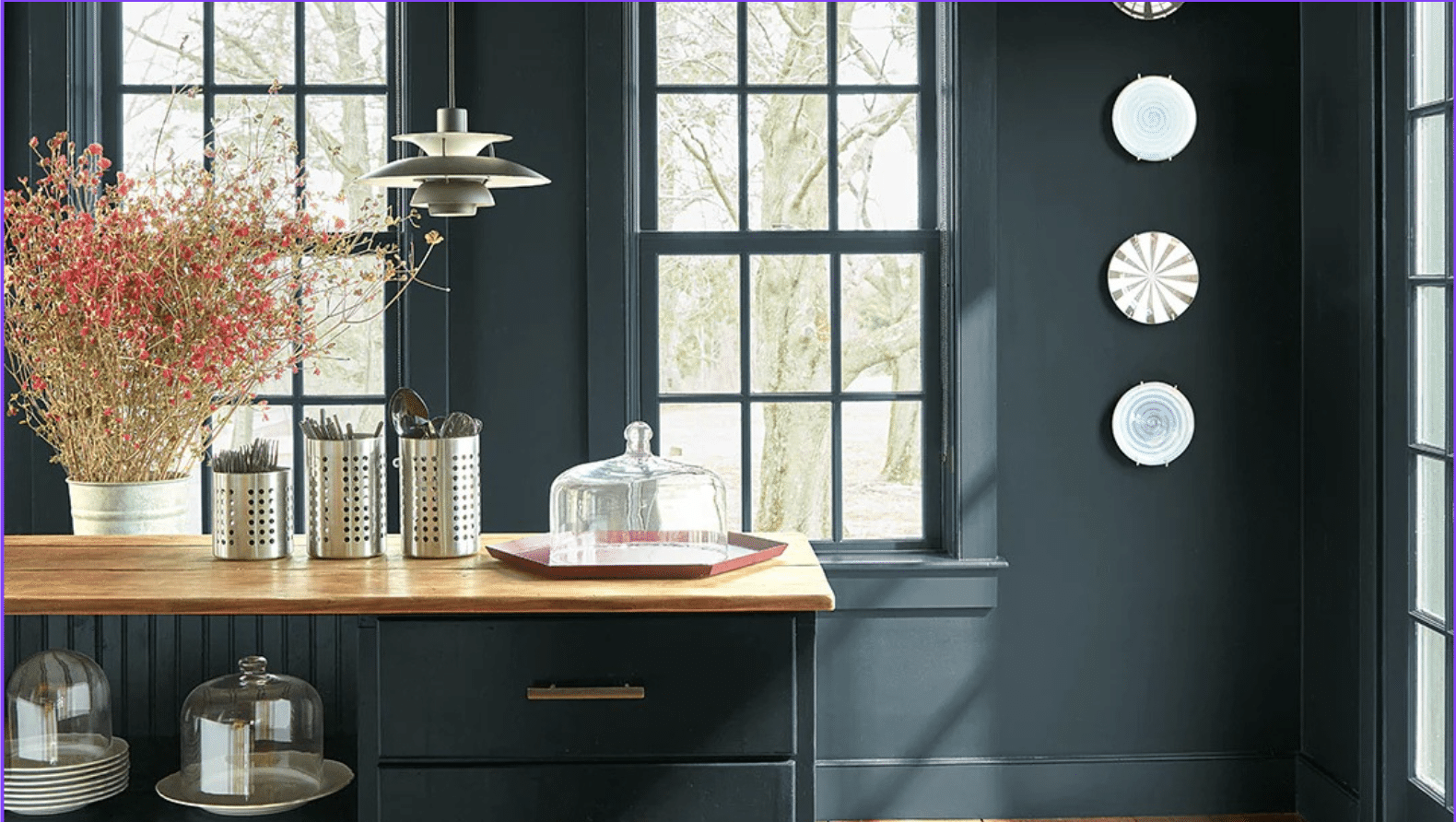
Accent walls are one of the best places to use Regent Green because it creates a focal point without overwhelming the space.
The dark color adds depth and makes the room feel more interesting, especially when the other walls are light colored.
I discovered this approach works wonderfully in my living room, where the Regent Green accent wall draws your eye immediately upon entering.
- In a living room or bedroom
- Behind a bed or sofa
- Makes light-colored furniture pop
2. Kitchen Cabinets
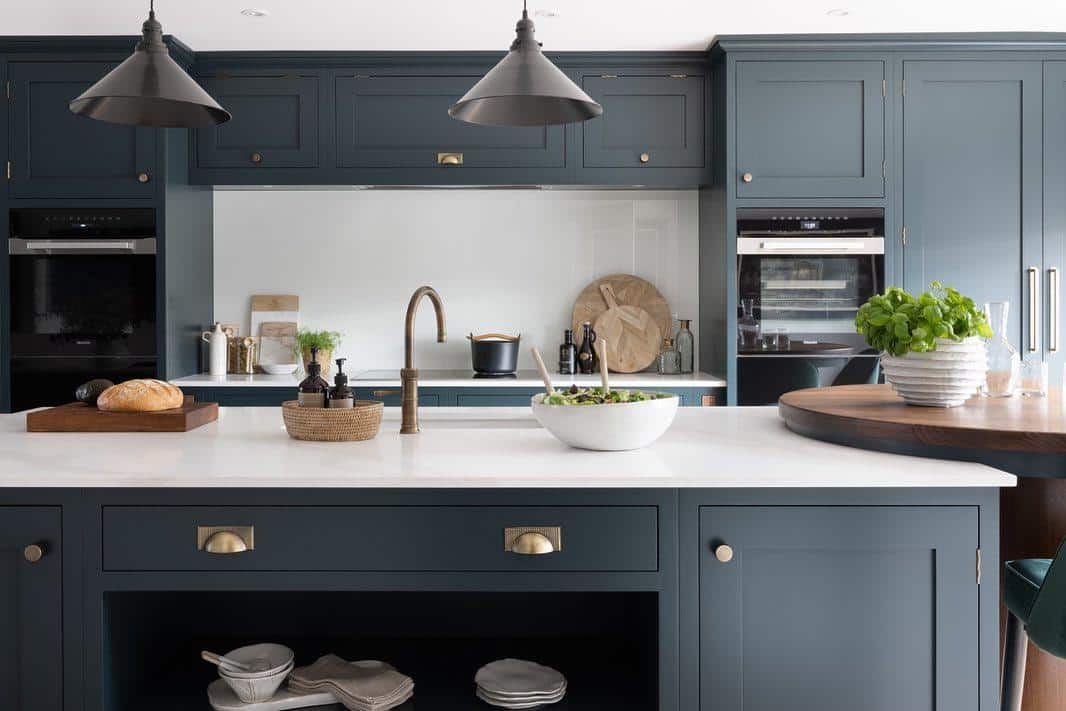
Kitchen cabinets painted in Regent Green create a statement kitchen that stands out from typical white or wood options.
The depth of color works especially well when you want to create visual interest without a complete kitchen renovation.
I was initially hesitant about using such a bold color in my kitchen. Still, painting just the lower cabinets with Regent Green completely refreshed the space without requiring new countertops or appliances.
- Perfect for a kitchen with personality
- Works on lower cabinets or an island
- Pairs well with brass or matte black handles
3. Front Door or Built-Ins
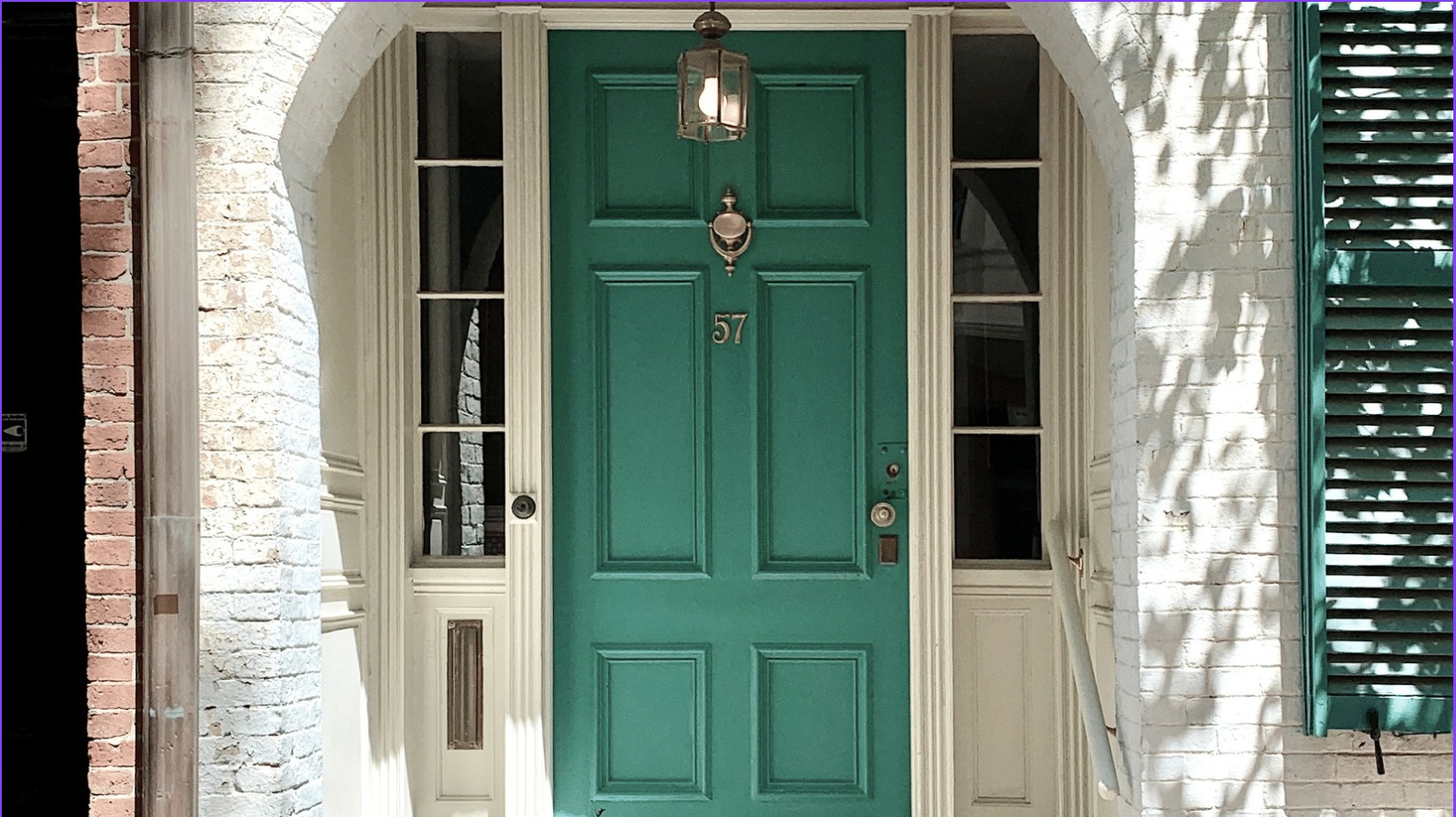
Using Regent Green on a front door or built-ins gives these features special attention. The color has enough presence to highlight architectural details while still feeling grounded and classic.
When I painted my front door with Regent Green, it completely transformed the curb appeal of my home.
- Looks classic on a front door
- Makes built-in shelves stand out
- Great for window frames, too
I painted my office bookcase with Regent Green, and now it’s the main feature of the room. Books and small objects really stand out against the dark background.
What Colors Pair Well with Regent Green
This color has presence, so you need to balance it with the right partners. Finding complementary colors is key to making Regent Green work in your space without feeling too heavy or dark.
Try these combinations:
1. Creamy Whites (like Benjamin Moore Simply White)
It provides the perfect contrast to Regent Green. Unlike stark whites, which can create harsh contrasts, these warm whites balance the green’s intensity while maintaining a soft, inviting atmosphere.
I paired Regent Green with Simply White on my trim and ceiling, and the combination feels sophisticated rather than jarring.
2. Warm Wood Tones
Naturally complement Regent Green’s earthy character. Oak, walnut, and cherry furniture pieces look especially rich against this color.
In my dining room, my walnut table stands out beautifully against the green walls, creating a timeless, elegant look that feels both classic and current.
3. Brass or Gold Hardware
When paired with Regent Green, it adds a touch of warmth and luxury.
The metallic finish catches light and creates a beautiful contrast against the deep background.
After painting with Regent Green, I switched my kitchen cabinet pulls to brushed brass, and this small change elevated the entire space.
4. Soft Grays
Soft grays work as perfect transitional colors when using Regent Green in your color scheme. They create a sophisticated palette that feels cohesive without being monotonous.
My entryway uses a light gray as a transition between my white living room and my Regent Green dining room, helping the colors flow naturally from space to space.
5. Natural Textures
Like rattan or linen, rattan and linen bring necessary warmth and lightness to balance Regent Green’s visual weight. Adding a rattan pendant light and linen curtains to my green office prevented the space from feeling too heavy or formal.
These natural elements make the room feel more lived-in and approachable despite the bold wall color.
Avoid pairing it with cool blues or silver—these combinations often feel mismatched.
My favorite match is Regent Green, with warm oak floors and cream-colored walls. The contrast makes each color look even better.
Lighting Changes Everything
Lighting dramatically affects how Regent Green appears in your space. Before making a final decision, it’s essential to see how this complex color behaves in your specific lighting conditions throughout the day.
In Bright Rooms
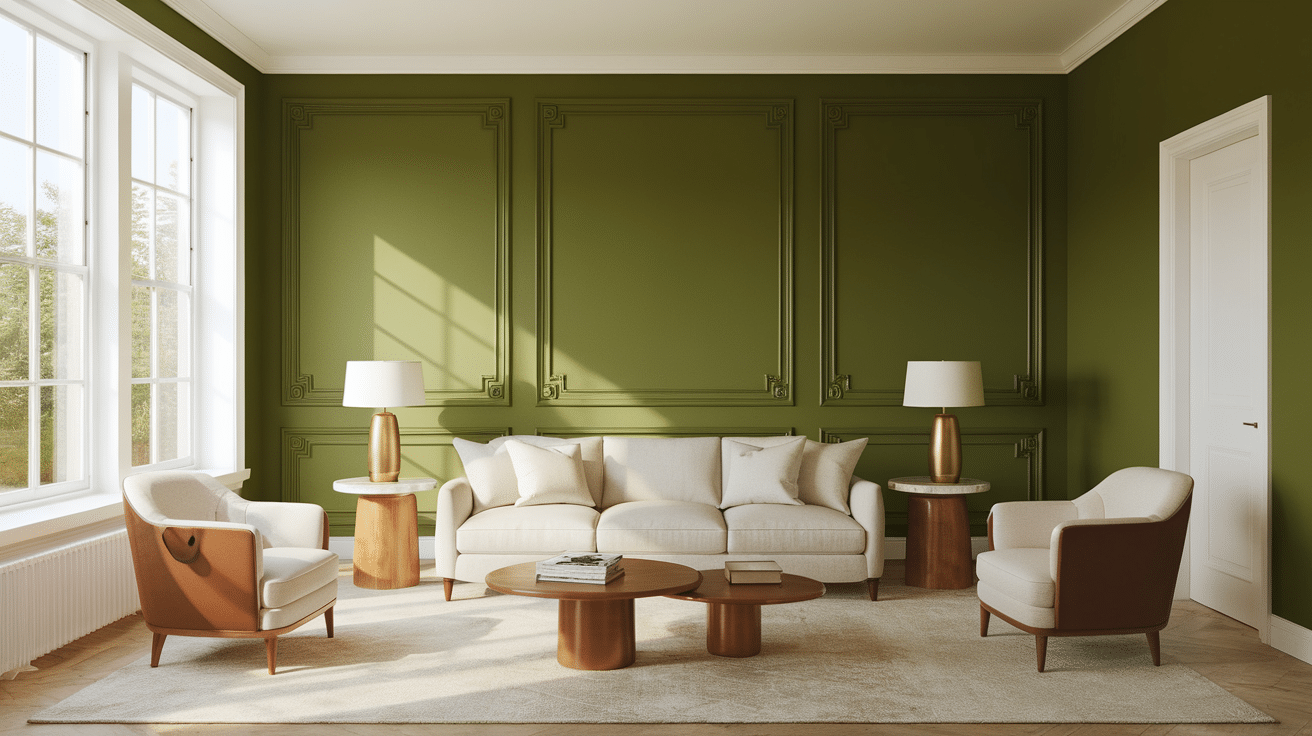
The magic of Regent Green truly reveals itself in spaces flooded with natural light. South and west-facing rooms showcase this color’s complexity particularly well.
During midday sunshine, you’ll notice subtle variations across the walls as the light shifts—sometimes appearing more forest green, other times showing hints of teal undertones.
This dynamic quality makes the color feel almost alive. It changes throughout the day, giving your space different moods as the hours pass.
- The green tones come forward.
- It feels alive and rich.
- You can see all its depth.
In Low Light
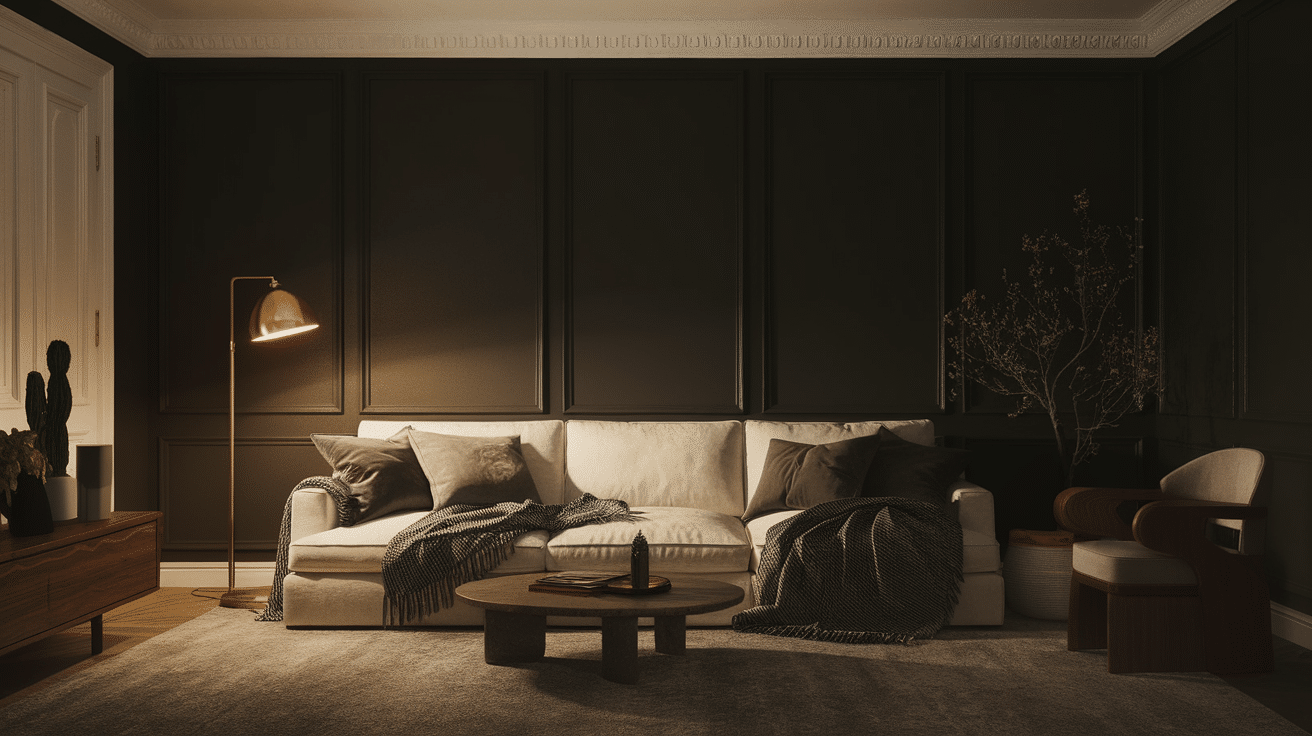
As daylight fades or in rooms with minimal windows, Regent Green transforms dramatically. Evening hours showcase the color’s depth and richness in an entirely different way.
Rather than appearing flat or dull like some colors do at night, Regent Green develops a velvety quality that absorbs light while still maintaining dimension. This evening transformation is perfect for creating intimate dining spaces or cozy reading nooks where the enveloping darkness feels intentional rather than gloomy.
- It looks almost black.
- Still beautiful—just more subtle
- Creates a cozy feeling
Tip: Test it on a poster board and move it around your room at different times of day. You’ll be surprised how much it changes.
I painted a small section on each wall before committing. The same color looked totally different on my north wall versus my south wall.
What I’d Do Differently
After living with Regent Green for a year, I’ve learned some valuable lessons about using this bold color. These insights might help you avoid some of the mistakes I made when working with such a deep shade.
If I painted with Regent Green again, I’d make a few changes:
- I’d use more warm whites around it for balance
- I’d avoid dark floors—it made the room feel too heavy
- I’d first test it with evening lighting (I skipped that the first time!)
These small changes would have made a big difference in how my space turned out.
Conclusion
Regent Green is bold, classic, and long-lasting.
You can use it in small doses or go all-in—it works both ways. I started with just one wall but ended up loving it so much that I painted three more spaces.
Want a rich color that won’t feel dated next year? This might be the one.
Your home should feel like you. If you love deep, moody colors that create a sense of calm, Regent Green deserves a spot on your shortlist.
Have you tried Regent Green? Are you thinking about it? Leave a comment—I’d love to know how you’d use it in your home.
If you’ve used this color, what did you pair it with? Your tips could help other readers make their decision.
Frequently Asked Questions
Is Regent Green Too Dark for Small Rooms?
Not necessarily. In small rooms with good lighting, it can create depth and interest. Use mirrors and adequate lighting to prevent the space from feeling closed in.
How Many Coats of Regent Green Will I Need?
Typically two coats provide full coverage, especially when using a good primer first. Dark colors like this often need a second coat for even application.
Does Regent Green Work in Modern Homes?
Yes, it works beautifully in modern spaces when paired with clean lines and minimal décor. The color adds sophistication without feeling too traditional.
Can I Use Regent Green in Bathrooms?
It works well in bathrooms with good lighting. In smaller bathrooms, consider using it on a vanity or accent wall rather than on all walls.
How Does Regent Green Compare to Hunter Green?
Regent Green is darker and more saturated than Hunter Green, with deeper blue undertones. Hunter Green is slightly brighter and more traditional.

